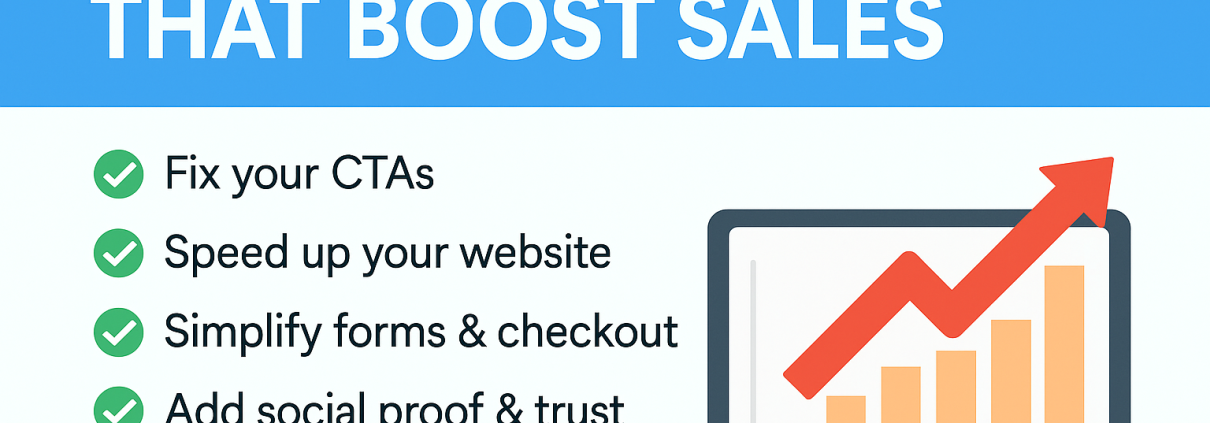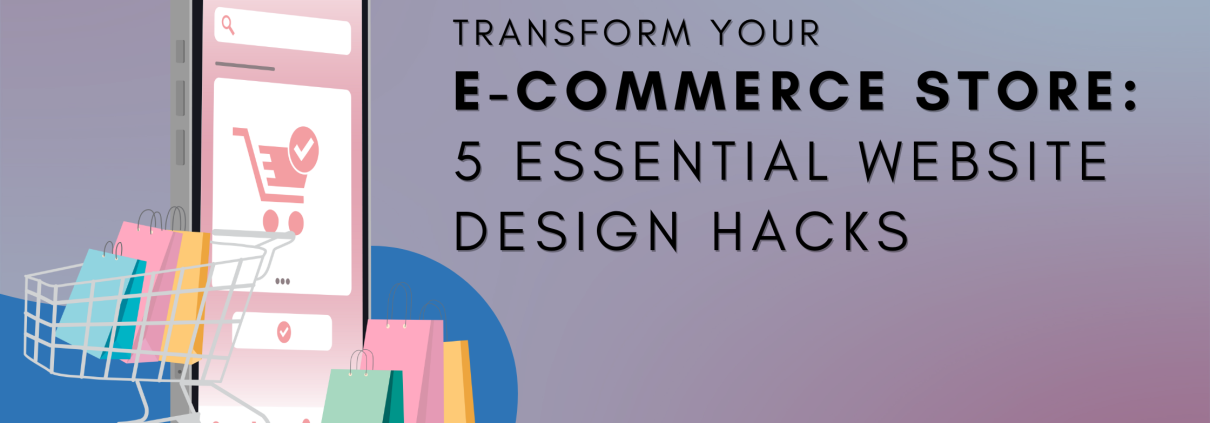Introduction: Top 5 CRO Fixes That Boost Sales
Most websites don’t fail because of traffic problems — they fail because of conversion problems. You can have 5,000 visitors per month, but if none of them buy, call, or book, your website isn’t working. That’s where conversion rate optimization (CRO) comes in.
CRO is the science of turning more visitors into customers. And the good news? You don’t need to rebuild your entire website. A few proven CRO fixes that boost sales can significantly increase your revenue without spending more on ads or traffic.
At AshramTech, we help small businesses redesign their websites and optimize for conversions. In this post, we’ll cover the top 5 CRO fixes that boost sales in 2025, with real-world examples you can apply today.
1. Fix Your CTAs (Call-to-Actions)
One of the simplest yet most overlooked CRO fixes that boost sales is optimizing your call-to-actions. Many websites hide their CTAs below the fold or use weak language like “Learn More”.
🔎 Example: A coaching business changed their button from “Learn More” to “Book Your Free Session” and placed it above the fold. Bookings increased by 22% in just one month.
✅ Action Steps:
- Use action-oriented text (e.g., “Buy Now,” “Get a Free Quote,” “Start My Trial”).
- Place CTAs above the fold, in the hero section, and repeat them throughout the page.
- Make CTAs stand out with contrasting colors.
2. Speed Up Your Website
Speed is a conversion killer. A slow website makes people leave before they even see your offer. Studies show that a 1-second delay can reduce conversions by 7%. That’s why improving load time is one of the most effective CRO fixes that boost sales.
🔎 Example: An eCommerce fashion brand cut their homepage load time from 6 seconds to 2 seconds. The result? Bounce rates dropped by 18% and sales increased by 15%.
✅ Action Steps:
- Compress images into WebP format.
- Use caching and a CDN.
- Choose fast hosting optimized for WordPress.
- Test your site with Google PageSpeed Insights.
3. Simplify Forms & Checkout
Long forms and complicated checkouts are another major reason websites lose sales. If you ask for too much information, customers abandon the process. Simplifying forms and checkout processes is a high-impact CRO fix that boosts sales.
🔎 Example: A fashion store reduced their checkout process from 5 steps to 3. They added guest checkout and autofill options. Their conversion rate jumped 30% in two weeks.
✅ Action Steps:
- Reduce form fields to only what’s necessary.
- Offer guest checkout instead of mandatory sign-ups.
- Use progress indicators to show users how close they are to finishing.
4. Add Social Proof & Trust Signals
People buy from businesses they trust. Without testimonials, reviews, or proof of past success, visitors hesitate. Adding social proof is one of the fastest CRO fixes that boost sales because it reassures customers that you’re credible.
🔎 Example: A SaaS startup doubled sign-ups after adding testimonials, star ratings, and logos of well-known clients to their homepage.
✅ Action Steps:
- Add client testimonials and reviews.
- Display trust badges (SSL secure, money-back guarantee, certifications).
- Showcase case studies and before/after results.
5. Personalize the User Experience
A one-size-fits-all website won’t maximize conversions. Personalization creates relevance, which boosts sales. Whether it’s showing related products or tailoring offers by location, personalization is one of the most powerful CRO fixes that boost sales in 2025.
🔎 Example: An LMS (Learning Management System) platform added personalized course recommendations (“Courses near you” and “Popular in your field”). Sign-ups increased by 25%.
✅ Action Steps:
- Show personalized product recommendations.
- Use location-based offers (e.g., “Free delivery in [city]”).
- Segment visitors with tailored landing pages for different industries.
Bonus: A/B Testing Every Change
Even with the best CRO strategies, guessing doesn’t work. That’s why A/B testing is a must. By testing different headlines, CTA colors, or layouts, you can see what actually drives conversions.
🔎 Example: A digital agency tested two homepage headlines:
- Version A: “We Build Websites”
- Version B: “Websites That Get You Clients”
Version B increased leads by 15%.
✅ Action Steps:
- Use tools like Google Optimize or VWO to test changes.
- Test one element at a time.
- Track results for at least 2–4 weeks.
CRO ROI: Why Small Fixes Matter
Here’s why CRO is so powerful:
- If your site gets 1,000 visitors per month and converts at 2%, that’s 20 customers.
- If you improve conversions to 3% with these CRO fixes that boost sales, that’s 30 customers.
- Without any extra traffic, you just increased sales by 50%.
That’s why CRO is one of the highest ROI activities you can invest in.
Conclusion
Most websites don’t need more traffic — they need better conversions. By fixing your CTAs, speeding up your site, simplifying forms, adding trust signals, and personalizing the experience, you can apply CRO fixes that boost sales immediately.
At AshramTech, we help small businesses turn their websites into sales machines with WordPress CRO, SEO, and web design strategies.
👉 Want to boost your sales without spending more on ads? Contact AshramTech today for a free consultation.


